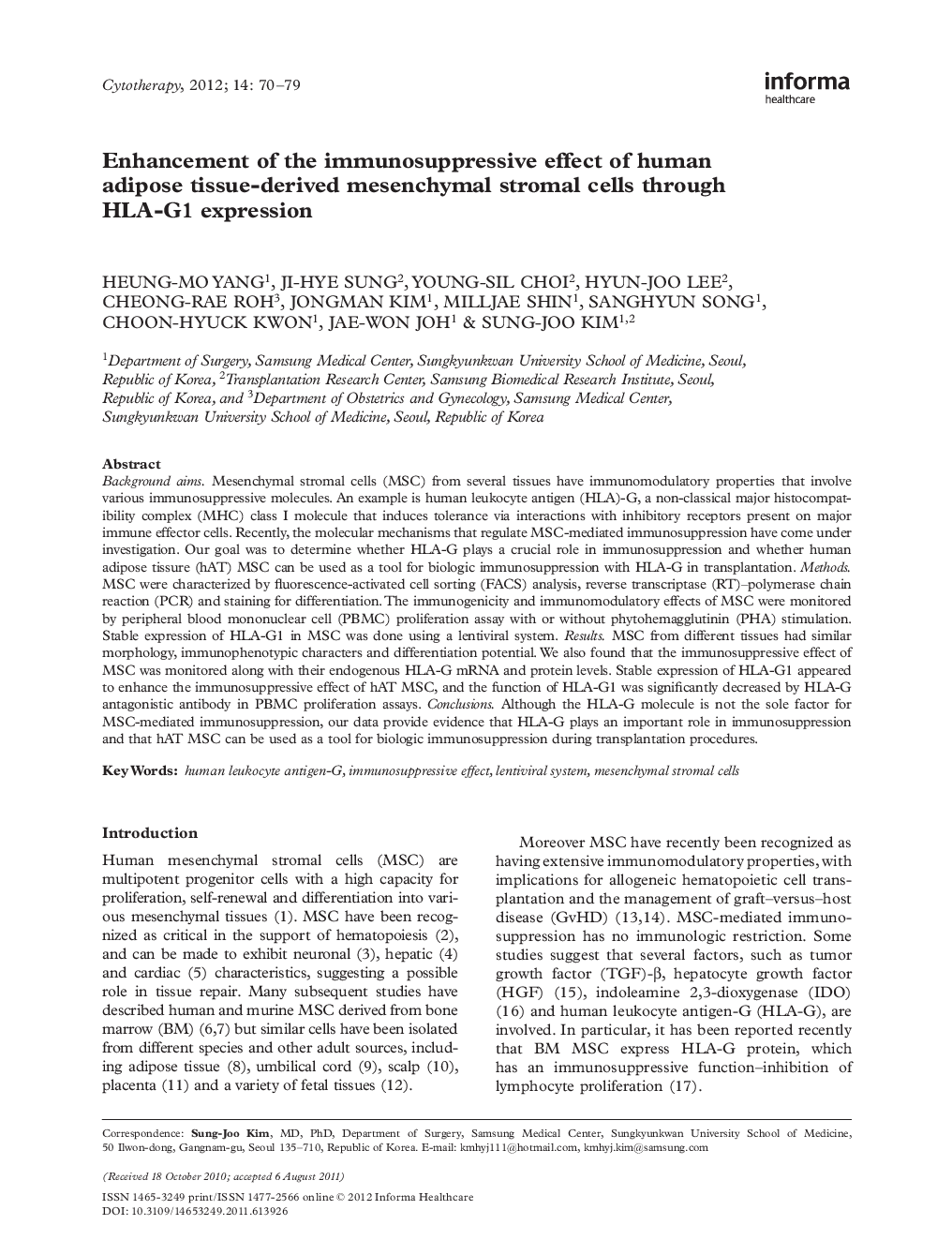| Article ID | Journal | Published Year | Pages | File Type |
|---|---|---|---|---|
| 2171841 | Cytotherapy | 2012 | 10 Pages |
Background aimsMesenchymal stromal cells (MSC) from several tissues have immunomodulatory properties that involve various immunosuppressive molecules. An example is human leukocyte antigen (HLA)-G, a non-classical major histocompatibility complex (MHC) class I molecule that induces tolerance via interactions with inhibitory receptors present on major immune effector cells. Recently, the molecular mechanisms that regulate MSC-mediated immunosuppression have come under investigation. Our goal was to determine whether HLA-G plays a crucial role in immunosuppression and whether human adipose tissure (hAT) MSC can be used as a tool for biologic immunosuppression with HLA-G in transplantationMethodsMSC were characterized by fluorescence-activated cell sorting (FACS) analysis, reverse transcriptase (RT)–polymerase chain reaction (PCR) and staining for differentiation. The immunogenicity and immunomodulatory effects of MSC were monitored by peripheral blood mononuclear cell (PBMC) proliferation assay with or without phytohemagglutinin (PHA) stimulation. Stable expression of HLA-G1 in MSC was done using a lentiviral systemResultsMSC from different tissues had similar morphology, immunophenotypic characters and differentiation potential. We also found that the immunosuppressive effect of MSC was monitored along with their endogenous HLA-G mRNA and protein levels. Stable expression of HLA-G1 appeared to enhance the immunosuppressive effect of hAT MSC, and the function of HLA-G1 was significantly decreased by HLA-G antagonistic antibody in PBMC proliferation assaysConclusionsAlthough the HLA-G molecule is not the sole factor for MSC-mediated immunosuppression, our data provide evidence that HLA-G plays an important role in immunosuppression and that hAT MSC can be used as a tool for biologic immunosuppression during transplantation procedures.
